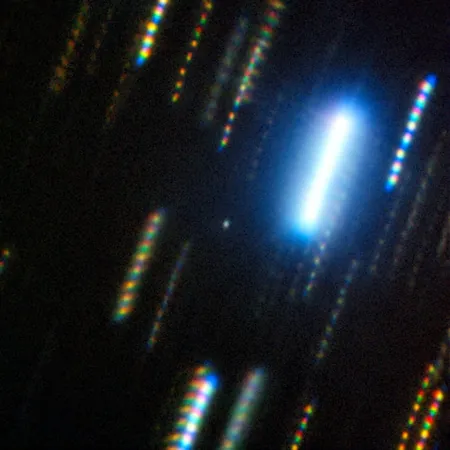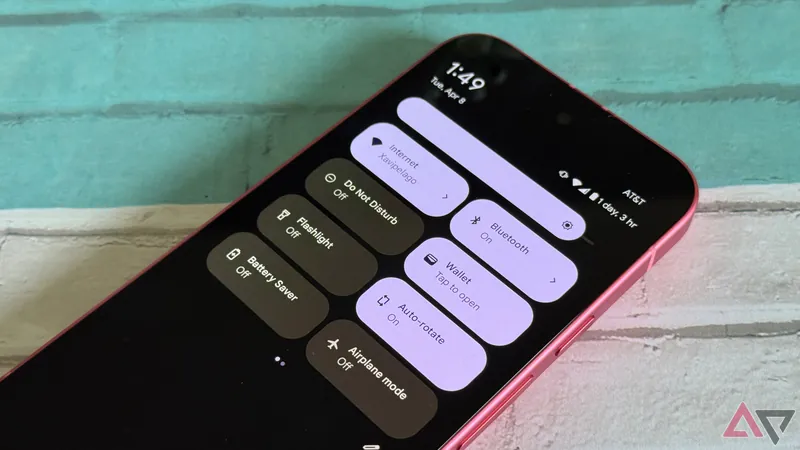
Shocking New Discovery Reveals Hidden Energy Cost of Water Splitting!
2025-04-15
Author: Michael
The Untapped Potential of Water Splitting
In our escalating quest for sustainable energy, water splitting has emerged as a frontline contender for generating clean hydrogen fuel. However, this promising process—crucial for extracting hydrogen from water—has a hidden flaw: it consumes far more energy than initially predicted.
A Game-Changing Discovery from Northwestern University
Researchers from Northwestern University have cracked the code behind this energy inefficiency. Their groundbreaking study reveals that before water molecules can release oxygen, they perform an astonishing flip! This unexpected maneuver turns out to significantly impact the energy required for the reaction.
By measuring the energy cost linked to this molecular flip, the team uncovered a major bottleneck in the efficiency of water splitting. But there's a silver lining: raising the pH level of water can reduce this energy cost, presenting a potential pathway to improve the entire process.
Unlocking Clean Hydrogen Fuel for Future Missions!
This vital knowledge could revolutionize the landscape of clean hydrogen production and even pave the way for breathable oxygen generation in future Martian missions. The findings were shared in a recent publication in Nature Communications.
The Challenge of Oxygen Evolution Reaction (OER)
According to Franz Geiger, the study's lead researcher and a chemistry professor at Northwestern, the oxygen evolution reaction (OER) poses a significant challenge. This reaction demands precise alignment for efficiency, making it more energy-intensive than calculations suggest. While theoretical models estimate it should only require 1.23 volts, real-world applications often see requirements skyrocketing to 1.5 or even 1.6 volts—resulting in high costs and limiting large-scale implementation.
Can We Replace Iridium?
As the search for affordable solutions continues, scientists are seeking alternatives to iridium, a precious metal critical for OER yet prohibitively scarce and expensive. Geiger notes, “Iridium is a rarity on Earth and not the answer to our energy crisis.” Excitingly, researchers are exploring more accessible materials like nickel and iron, aiming to match or even surpass iridium's efficiency.
Revolutionizing Techniques: Enter PR-SHG!
The researchers employed a cutting-edge technique known as phase-resolved second harmonic generation (PR-SHG) to dive deep into the molecular dynamics of water splitting. By utilizing this advanced light-based method, they could directly observe how water molecules engage with the metallic electrodes in real-time.
Geiger likens PR-SHG to 'noise-canceling headphones,' skillfully manipulating light to reveal how water molecules arrange themselves in response to the electric field.
A Major Breakthrough in Understanding Water Molecules
Through their observations, the team found that the reorientation of water molecules occurs just before the OER begins, a critical step that impacts electron transfer efficiency. As the electric field intensifies, this flipping ensures the optimal positioning for hydrogen and oxygen separation, making the process more manageable.
In summary, this revolutionary study not only clarifies the inefficiencies hampering water splitting but also hints at innovative ways to transform it into a viable clean energy solution.









 Brasil (PT)
Brasil (PT)
 Canada (EN)
Canada (EN)
 Chile (ES)
Chile (ES)
 Česko (CS)
Česko (CS)
 대한민국 (KO)
대한민국 (KO)
 España (ES)
España (ES)
 France (FR)
France (FR)
 Hong Kong (EN)
Hong Kong (EN)
 Italia (IT)
Italia (IT)
 日本 (JA)
日本 (JA)
 Magyarország (HU)
Magyarország (HU)
 Norge (NO)
Norge (NO)
 Polska (PL)
Polska (PL)
 Schweiz (DE)
Schweiz (DE)
 Singapore (EN)
Singapore (EN)
 Sverige (SV)
Sverige (SV)
 Suomi (FI)
Suomi (FI)
 Türkiye (TR)
Türkiye (TR)
 الإمارات العربية المتحدة (AR)
الإمارات العربية المتحدة (AR)